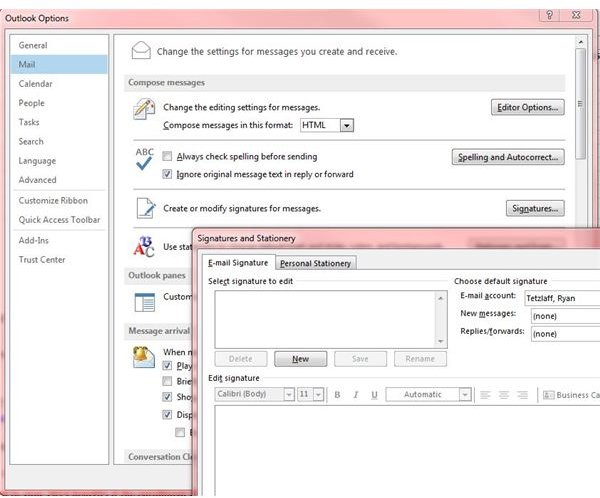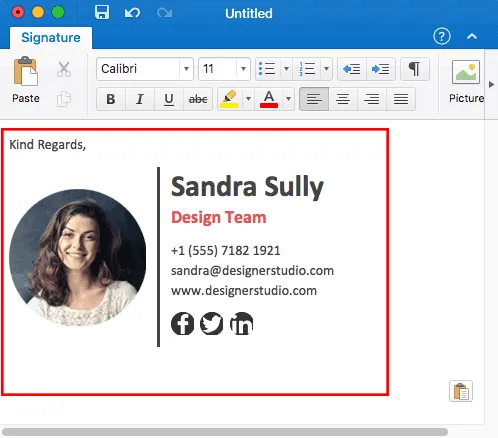
In the New Signature dialogue box, you can type a name for the signature. You can then head to the Message menu, select Signature, and then choose Signatures. Next, look under Select signature to edit, and choose New. By using %APPDATA%\Microsoft\Signatures you can directly go to the Signatures folder even if AppData is hidden.To create a signature in the desktop version of Outlook, you’ll want to first open an email as if you were replying to it. If you try to go through the folders in Windows Explorer or File Explorer (in Windows 8.1) you won’t be able to get to them with the default settings because as I mentioned in my article AppData is a hidden folder. Another thing I would like to point out is that I always show my hidden files in File Explorer but by default they are not displayed. By removing the extra “Roaming” in the path it works properly. The reason is that (at least) in Windows 7 and Windows 8.1 if you use the environment variable %APPDATA% in the Start, Run box it will take you to the AppData\Roaming folder, rather than the AppData folder. However, if you remove “Roaming” from this path and type %APPDATA%\Microsoft\Signatures at Start, Run it works :). If you type %APPDATA%\Roaming\Microsoft\Signatures in the Start, Run box it doesn’t work. If you use Windows or File Explorer to go through the folders then the path is AppData\Roaming\Microsoft\Signatures but when you are working with the environment variable %APPDATA% things are a little different. All your old signatures are now updated.Ĭopyright ©2014 Zubair Alexander.If you don’t click in the Edit signature area your option to select Save will be grayed out. Click anywhere in the Edit signature box where your signature is, and then click Save.


Under the Compose messages section, click Signatures.This will ensure that you don’t experience any potential problems when switching or deleting signatures in a message. Microsoft recommends that you update the signatures you’ve created in older versions of Outlook so that they use updated HTML code that uses cascading style sheets (CSS). To import them on another computer, simply copy all the signature files and folders to the %APPDATA%\Microsoft\Signatures folder. In addition, to the folders, there are three files for each email signature: Don’t forget to back up all the associated folders.

Copy all the signatures files and the folders in the above folder to save them for future use.


 0 kommentar(er)
0 kommentar(er)
